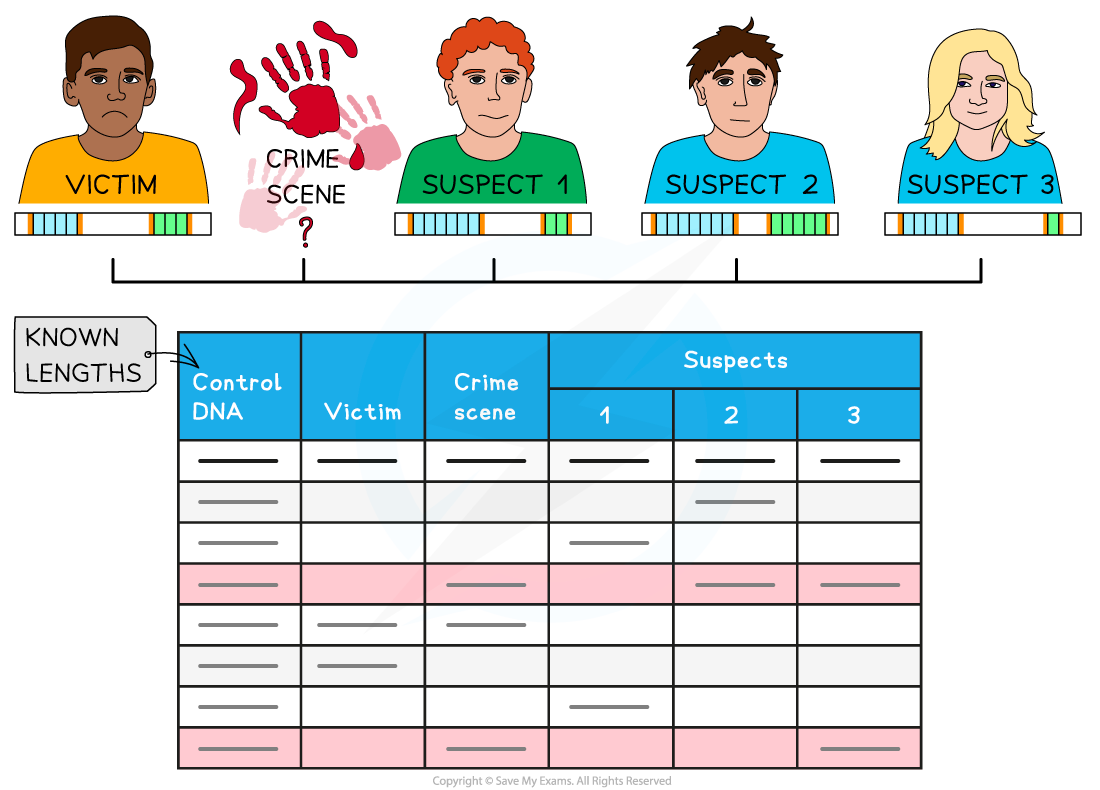- 翰林提供学术活动、国际课程、科研项目一站式留学背景提升服务!
- 400 888 0080
AQA A Level Biology复习笔记8.4.13 Uses of Genetic Fingerprinting
Uses of Genetic Fingerprinting
- Polymerase chain reaction (PCR) is a common molecular biology technique used in most applications of gene technology, for example, DNA profiling (eg. identification of criminals, determining paternity and species conservation) or genetic engineering
- It is used to produce large quantities of specific fragments of DNA or RNA from very small quantities (even just one molecule of DNA or RNA). By using PCR scientists can have billions of identical copies of the DNA or RNA sample within a few hours
- DNA profiling (genetic fingerprinting) enables scientists to identify suspects for a crime and identify corpses because every person (apart from identical twins) has repeating short non-coding regions of DNA (20 to 50 bases) that are unique to them, they are called variable number tandem repeats (VNTRs)
- The number of VNTR regions are inherited from your biological parents
- The more closely related you are to a person the more likely the repeats have similar patterns
- The length of the VNTR regions are unique to each individual (apart from identical twins)
- When DNA testing occurs in forensic medicine and criminal investigations the image of these repeats in the DNA (indicated by a pattern of bars) creates a DNA profile or fingerprint. The profile is analysed to allow conclusions to be made (eg. who the suspects are)
- To create a DNA profile from the DNA being tested scientists complete the following in sequence:
- Obtain the DNA, which can be extracted from the root of a hair, a spot of blood or semen or saliva
- Increase the quantity of DNA by using PCR
- Use restriction endonucleases (different restriction endonucleases cut close to different VNTR sequences) to cut the amplified DNA molecules into fragments
- Separate the fragments using gel electrophoresis
- Add radioactive or fluorescent probes that are complementary and therefore bind to specific VNTR regions
- X-ray images are produced or UV light is used to produce images of the fluorescent labels glowing. These images contain patterns of bars (the DNA profile) which is then analysed
Forensic medicine / criminal investigations
- DNA profiling has been used by forensic scientists to identify suspects of crimes
- Samples of body cells or fluids (eg. blood, salvia, hair, semen) are taken from the crime scene or victims body (eg. rape victims)
- DNA is removed and profiled
- The profile is compared to samples from the suspect (or criminal DNA database), victim and people with no connection to the crime (control samples)
- Care must be taken to avoid contamination of the samples
- DNA profiling can also be used in forensics to identify bodies or body parts that are unidentifiable (eg. too badly decomposed or parts remaining after a bomb blast)

Using DNA profiling in criminal investigations. Suspect 3 has the most fragments in common with the crime scene DNA so it is likely that they are the culprit.
Other applications
- DNA profiling (along with Next Generation DNA sequencing) can be used to identify individuals that are at risk of developing particular diseases, as research shows that certain VNTR sequences are associated with an increased incidence of particular diseases eg. cancers and heart disease
- DNA profiling can be used to determine familial relationships for paternity cases (to suggest who the father is) or immigration cases (to determine if the family are related)
- It can also be used in species conservation to help scientists with captive breeding programmes to reduce chances of inbreeding
转载自savemyexams

早鸟钜惠!翰林2025暑期班课上线

最新发布
© 2025. All Rights Reserved. 沪ICP备2023009024号-1








